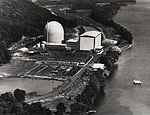Moodus, Connecticut
Census-designated places in ConnecticutCensus-designated places in Middlesex County, ConnecticutConnecticut folkloreConnecticut placenames of Native American originEast Haddam, Connecticut ... and 3 more
Use mdy dates from October 2011Villages in ConnecticutVillages in Middlesex County, Connecticut

Moodus is a village in the town of East Haddam, Connecticut, United States. The village is the basis of a census-designated place (CDP) of the same name. The population of the CDP was 1,982 as of the census of 2020.
Excerpt from the Wikipedia article Moodus, Connecticut (License: CC BY-SA 3.0, Authors, Images).Moodus, Connecticut
East Haddam Moodus Road,
Geographical coordinates (GPS) Address Nearby Places Show on map
Geographical coordinates (GPS)
| Latitude | Longitude |
|---|---|
| N 41.502777777778 ° | E -72.45 ° |
Address
East Haddam Moodus Road
East Haddam Moodus Road
06469
Connecticut, United States
Open on Google Maps









